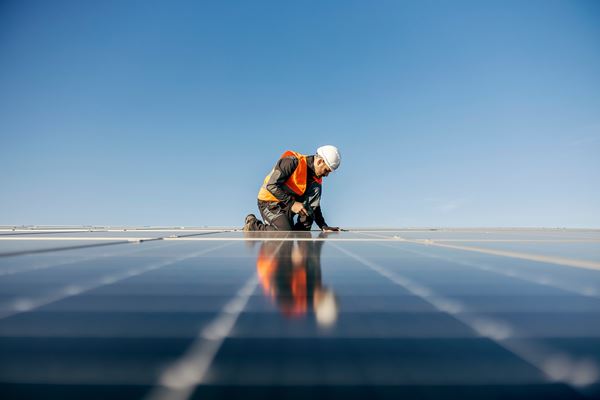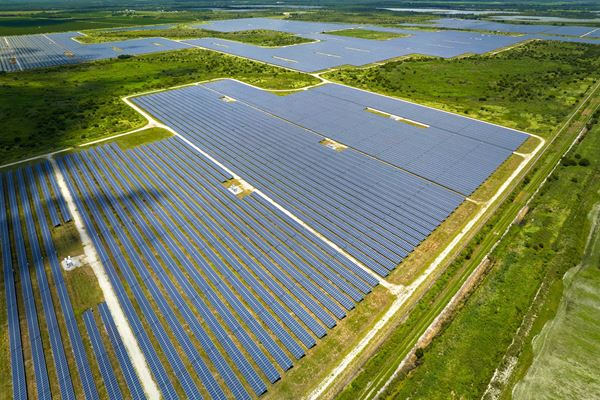Understanding Key Solar Panel Components, Types, and Industry Standards

Solar panels have become integral to the renewable energy sector, addressing increasing energy demands with sustainable solutions. Advancements in technology have significantly improved the efficiency and affordability of solar panels, broadening their accessibility across residential and commercial markets. This blog will explore the essential components of solar panels, their manufacturing processes, various types, factors causing damage, and the consequent impact on performance.
Industry standards, particularly those set by the International Electrotechnical Commission (IEC), have played a crucial role in ensuring the reliability and safety of solar panels. The harmonization of IEC 61730 standards in 2017 established comprehensive guidelines for construction, component requirements, and safety testing, which manufacturers adhere to, enhancing the quality and durability of photovoltaic (PV) modules.
Solar Panel Components and Types
Solar panels consist of several key components: solar cells, tempered glass, an aluminum frame, encapsulant layers, a back sheet, and a junction box. The solar cells, primarily made from silicon, are the core of the panel, converting sunlight into electrical energy. These cells can be either monocrystalline or polycrystalline, with monocrystalline cells providing higher efficiency at a higher cost. The manufacturing process includes creating silicon wafers, doping them with phosphorus and boron to enhance electron movement, and assembling them into panels with protective layers and electrical contacts. Quality control is essential to ensure the panels meet efficiency standards before shipping.
Solar panels available in the market include monocrystalline, polycrystalline, PERC (Passivated Emitter and Rear Contact), and thin-film panels. Monocrystalline panels are recognized for their high efficiency and long lifespan. Polycrystalline panels are more cost-effective but slightly less efficient. PERC panels feature improved efficiency due to newer technology, and thin-film panels are lightweight and flexible, suitable for applications like portable chargers and landscape lighting. Leading manufacturers such as Canadian Solar, JA Solar, and Jinko Solar dominate the market, continuously innovating to enhance panel performance and reduce costs.
Factors Affecting Solar Panel Efficiency and Lifespan
Solar panel damage can stem from multiple sources, adversely affecting their efficiency and lifespan. Environmental conditions such as snow, wind, hail, and temperature fluctuations can inflict physical harm on the panels. Additionally, shipping and handling during transportation and installation may introduce cracks or other defects. Manufacturing issues, including substrate impurities and lapses in quality control, can produce panels prone to damage. Improper installation practices, such as dropping tools on the panels or incorrect mounting, can also result in cracks and dents. Other potential sources of damage include rodents and power surges from the grid.
The impact of damage on solar panels is substantial, leading to decreased electrical production and efficiency. Typically, solar panels experience an efficiency reduction of about 1-2% in the first year, followed by a gradual decline of 0.5-1% per year. Damage can accelerate this decline, causing higher losses in energy production. This reduction can affect the credits received from electrical utilities, as insufficient power generation may lead to diminished financial incentives. High resistance at the connectors and interconnects can create hot spots and snail trails, further reducing the panel's performance and potentially posing safety hazards.
Ensuring Solar Panel Safety and Reliability
Manufacturers ensure the safety and reliability of solar panels by adhering to industry standards such as UL 1703, which focuses on safety and performance. These standards maintain the integrity of the panels, ensuring efficient operation throughout their lifespan. Regular testing and certification processes identify and mitigate potential issues, ensuring compliance with required safety and performance criteria. Adhering to these standards allows manufacturers to deliver high-quality solar panels that support renewable energy growth and reduce carbon emissions.
IEC 61215 is another critical standard, complementing IEC 61730, involving qualification tests to identify design and material flaws that could lead to premature failures. These tests include accelerated field failure simulations, broken interconnects, cell delamination, encapsulant issues, solder bond failures, ground faults, and structural failures. The rigorous testing process ensures solar panels can withstand various environmental stresses, thus reducing operational failures. Manufacturers must pass these tests to achieve IEC 61215 certification, demonstrating the panel's reliability and performance.
A specific test under IEC 61215 is the hail impact test, crucial for assessing solar panel durability against hailstones. This test involves shooting ice balls at the panels to simulate hail impact, requiring them to withstand a 25mm ice ball at 23 meters per second (approximately 50 mph) to meet the minimum standard. Some panels undergo testing with larger ice balls at higher speeds to ensure resistance to more severe hail conditions. This test is vital for regions prone to hailstorms, guaranteeing the panels can endure extreme weather events without significant damage.
The life expectancy of solar panels is another important factor for manufacturers and consumers. Most panels come with a warranty of up to 25 years, generally considered their life expectancy. Technological advancements often render older panels obsolete within 10-15 years as newer, more efficient models become available. This rapid innovation means that while panels can last for decades, their efficiency and cost-effectiveness may decline over time, prompting users to upgrade to newer models.
Solar panels are integral to the renewable energy landscape, providing a sustainable solution to meet increasing energy demands. Understanding their fundamentals, manufacturing process, types, and factors leading to damage is essential for maximizing efficiency and lifespan. Adhering to industry standards and innovating continuously ensures their reliability and performance, contributing to a cleaner and more sustainable future.
The stringent standards set by the IEC, such as IEC 61730 and IEC 61215, play a crucial role in the reliability and safety of solar panels. Rigorous testing, including hail impact tests, ensures panels can withstand various environmental stresses, reducing operational failures. Although solar panels typically have a life expectancy of up to 25 years, technological advancements often lead to the adoption of newer, more efficient models sooner. These standards and ongoing innovations are vital for the sustainable growth of the solar industry, providing consumers with reliable and efficient energy solutions.
Connect With Solar Energy Engineering Experts
As the demand for solar energy accelerates and systems become more complex, so does the importance of having the right expert on your side. Whether you're dealing with micro-cracks in PV modules, inverter malfunctions, or fires linked to electrical faults, understanding the root cause of failure requires more than just general knowledge—it requires deep technical expertise.
Envista Forensics connects you to expert renewable energy consultants who are electrical and mechanical engineers with decades of specialized experience in solar energy systems. From photovoltaic to concentrated solar power (CSP) technologies, we investigate design flaws, equipment failures, fire incidents, and everything in between. We help insurers, attorneys, and businesses make informed decisions by providing clear, science-backed answers and actionable solutions.
If you're facing a loss, dispute, or performance issue involving solar infrastructure, don’t settle for guesswork.
Contact Envista today to consult with a solar expert who understands every component—from the modules to the mirror arrays—and is ready to support your investigation, claim, or case with precision and confidence.
Our experts are ready to help.





